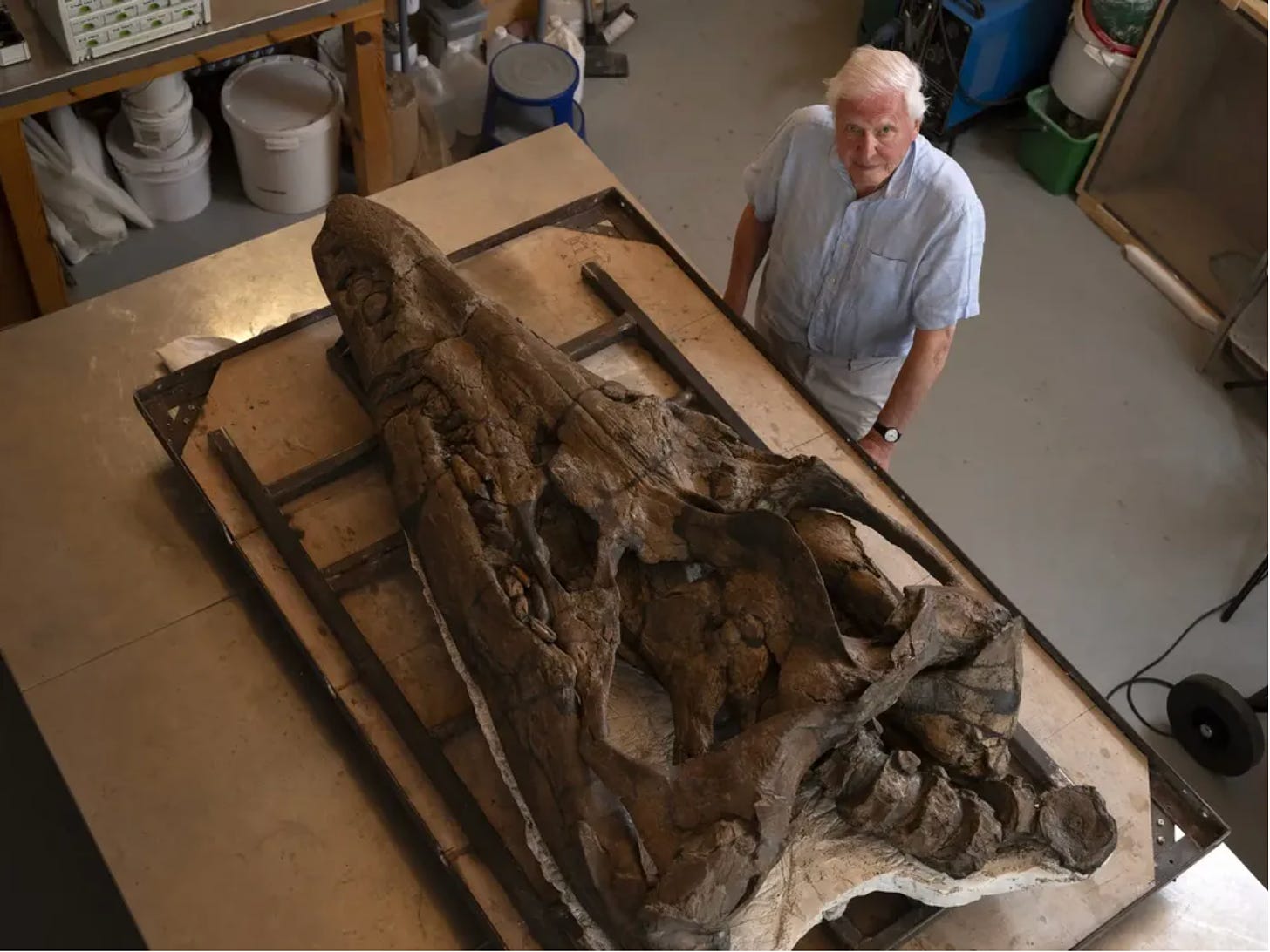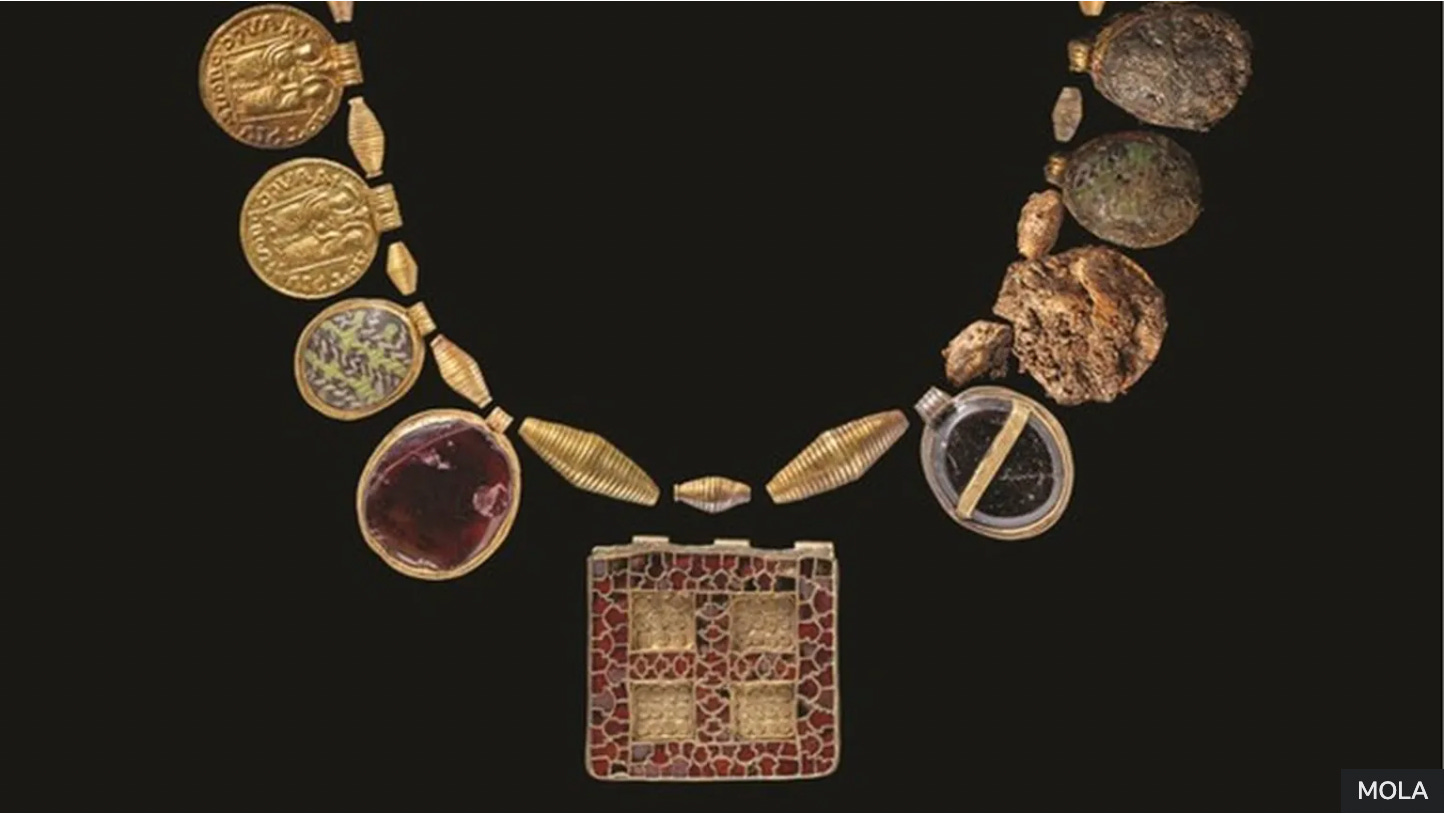Unruly History in the News #44
Extinct dogs, beautiful necklaces, and dark discoveries at Pompeii.
Hey everyone,
Finishing up your holiday shopping? I have some last-minute gifts for history lovers for you!
And don’t forget, I also have a short feedback survey running! The answers to these questions will help me make Unruly Figures better in 2024. Everyone who fills one out will be entered to win a $50 gift card and an annual subscription to Unruly Figures.
All right, onto history acting unruly in the news:
In 2015, a Canadian gallery found out that several of its newly acquired sketches by J.E.H. MacDonald were probably forgeries. After 8 years of investigation, the fakes were confirmed, but instead of burying the news in embarrassment, the gallery is opening an exhibit dedicated to showing how the forgeries were uncovered.
Speaking of galleries and museums, it was 19th-century cabinets of curiosities that helped us develop the modern museum. Now, museums are starting to examine the histories of those collections and consider the ethics of collecting.
A new study shows that a unique breed of wooly dog, indigenous to Canada, was driven to extinction by colonialism and the death of the indigenous people who bred and cared for them.

This full-body reconstruction of a woolly dog is based on a 160-year-old pelt in the Smithsonian’s collection. Source: Karen Carr/Canadian Press. When we talk about colonialism, we often think of people pushing other people off their land. But what about the naturalist side? Here is a look at how bougainvillea colonized the world. (I for one have a beautiful pink one taking over my fence. Anyone else?)
In 1948, British soldiers killed 24 people during the Malayan Emergency. 75 years later, their descendants continue to search for answers and justice.
Suppressed by the early Church in the 4th century, the Oracle of Delphi still beguiles us—why?
And in even more ancient history, 4.5 billion years ago a Mars-sized planet collided with Earth, giving us the moon. Its remains have possibly been located underneath the Earth’s crust.
The lore of medicine in “the Dark Ages” brings to mind bleeding, mercury, and various other “cures” as bad as the illnesses they “treated.” But modern medicine actually has a lot to thank the Medieval Era for—including the scientific process.
This new encyclopedia helps visitors explore Europe’s smelly history.
Victorian ladies were meant to spend their youth in pursuit of marriage—but the spells and charms they used might not have befitted a Victorian lady.
This 700-year-old horary quadrant was used to tell time. It’s England’s oldest known and dated scientific device, and it just sold at auction for £126,000.
What do the watermelon, the olive branch, and the keffiyeh have in common? They’re all symbols for Palestine.
Speaking of the keffiyeh, sales of the garment in the US have skyrocketed since the Israel-Hamas war began in October. This despite the sometimes violent attacks that wearers endure.
You’re probably familiar with Lunch Atop a Skyscraper, the famous image of the workmen having lunch on a beam hundreds of feet above New York City, right? Well now at Rockefeller Center, you can recreate that photo with your friends—safely strapped in, of course.
And in archaeology…
Apparently the Vikings had terrible teeth, but decent treatments.
I love an end-of-year round-up. Here are some of 2023’s most exciting archeological discoveries.
This drought in the Amazon is bad—but the lower water levels are revealing ancient carved faces that haven’t been seen in about 2,000 years.
A pre-historic “sea monster” skull was just found in a beachside cliff in Dorset. The skull is 6.5 feet long and remarkably intact. Maybe those Medieval maps with ‘here be monsters’ on them were being literal.

David Attenborough stands next to the enormous fossilized skull at the Etches Collection Museum of Jurassic Marine Life in Kimmeridge, England. Source: BBC Studios. We’ve gotten a lot of really fun and cool news out of Pompeii this year (who could forget the pizza mural found this summer?) but this new revelation is dark: a prison-cum-bakery where enslaved workers toiled in underground darkness for hours a day turning grain into flour. Gabriel Zuchtriegel, director of the Archaeological Park of Pompeii, described the site as “the most shocking side of ancient slavery.”
Ancient Egyptians kept baboons in captivity and mummified their remains. Like some pet-owners though, they didn’t know how to take are of their beloved pets, leading to a “cascade of health problems.”
This burial site discovered in Harpole last year might rival Sutton Hoo. They believe a young, high-status woman was buried there around the year 700 CE, and her jewelry is exquisite.

Image source: Museum of London Archaeology
Could nostalgia be a tool for inspiration rather than a sign of degeneracy?
How did Feudal Japan’s best and most dangerous spies—ninjas—evolve into pop culture icons? Here is a history of their transformation.
If you like that, you’ll love my episode on Yasuke, the first Black samurai!
The Canterbury Tales is nearly 600 years old—here is a look at how each succeeding era has reinterpreted its author, Geoffrey Chaucer, for themselves.
Who was Rumi, really? 750 years after his death, his personality has also been interpreted differently for different people, this time along an East/West divide.
Take a look at how one band has helped us reimagine male emotion.
Speaking of music history, here is an oral history of the release of the Velvet Underground’s first album.
And Italian opera singing has officially been added to UNESCO’s list of Intangible World Heritage. Check out the other 54 additions to the list here.
The beautiful town of Qaanaaq in northwest Greenland is one of the last places to see ancient Arctic life.
In mid-19th-century Wales, men dressed up as women and called themselves Rebecca’s Daughters…to protest taxes. The interesting story is currently being reexamined.
A dark history of Paris’ creepiest tourist site: the Catacombs.
Finally, today in history: 120 years ago, the Wright Brothers took their first flight.






